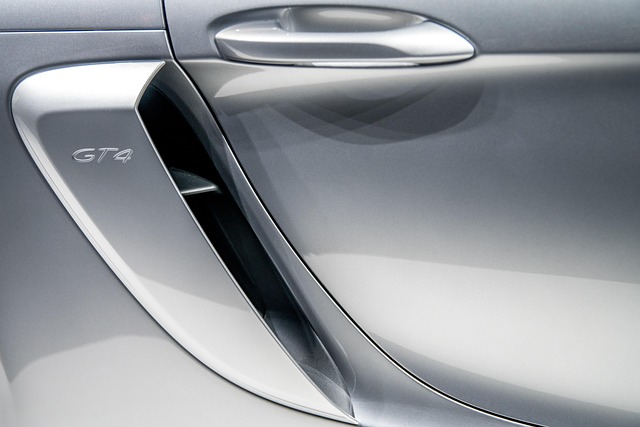High-flow design optimizes air movement in internal combustion engines for enhanced fuel efficiency and performance. Select Cold Air Intakes (CAIs) are central to this strategy, drawing in cooler, denser outside air for more efficient combustion. Customized pipelines ensure efficient airflow delivery, complementing turbocharged intakes or lightweight feeders. Strategic selection enhances power output while reducing fuel consumption, crucial for off-road vehicles or custom pipelines requiring careful engineering. CAIs are revolutionizing automotive engineering, boosting performance and mileage in modern high-demand vehicles.
In pursuit of enhanced fuel efficiency, high-flow design has emerged as a game-changer in automotive engineering. This article delves into the fundamental principles of high-flow design and its crucial role in optimizing vehicle performance. We explore the impact of select cold air intakes (CAI) on overall efficiency, offering insights on how these components can enhance airflow for maximum gain. Additionally, we discuss common challenges and provide solutions, backed by real-world examples demonstrating successful high-flow implementations.
- Understanding High-Flow Design Fundamentals
- The Role of Cold Air Intakes in Fuel Efficiency
- Optimizing Airflow for Maximum Efficiency
- Common Obstacles and Their Solutions
- Real-World Examples: Successful High-Flow Implementations
Understanding High-Flow Design Fundamentals

High-flow design is a principle that revolves around optimizing air movement within an internal combustion engine to enhance its overall efficiency. At its core, it involves understanding the engine’s breath—the intake and exhaust of air—and how this affects power output and fuel consumption. One key aspect is the selection of cold air intakes (CAIs). CAIs are designed to draw in cooler, denser air from outside the vehicle, which is crucial for efficient combustion. By directing cold, high-density air directly into the engine, these systems can significantly improve airflow, leading to better performance and reduced fuel wastage.
This concept goes hand-in-hand with auto cooling enhancements and efficient engine cooling solutions. High-flow designs ensure that the engine operates at optimal temperatures, preventing overheating while maximizing power generation. Turbocharged car intakes, for instance, not only enhance airflow but also manage charge temperature, contributing to a smoother combustion process. By focusing on these design fundamentals, engineers can create vehicles with superior fuel efficiency without compromising on power and performance.
The Role of Cold Air Intakes in Fuel Efficiency

Cold air intakes play a pivotal role in enhancing fuel efficiency by optimizing engine performance. These systems are designed to draw in cool, dense air from outside the vehicle’s cabin, which is then directly fed into the engine. Unlike traditional intake systems that pull air from within the engine bay, often warmed by the engine and surrounding components, cold air intakes ensure that the fuel-air mixture is as cold and dense as possible. This simple yet effective modification improves several key aspects of engine operation.
By selecting high-quality cold air intakes, vehicle owners can expect better throttle response, increased horsepower, and improved torque. The enhanced airflow allows for more efficient combustion, leading to reduced fuel consumption. Moreover, proper installation of these systems also aids in engine cooling accessories, ensuring the engine stays at optimal temperatures even under heavy loads. This synergistic effect not only boosts fuel efficiency but also contributes to overall vehicle performance and longevity.
Optimizing Airflow for Maximum Efficiency

Optimizing airflow is a key aspect of high-flow design aimed at boosting fuel efficiency. By selecting cold air intakes (CAI), vehicles can draw in cooler, denser air from outside the engine compartment, enhancing combustion and increasing power output. This simple yet effective modification works hand-in-hand with turbocharged car intakes or lightweight cold air feeders to further enhance performance.
Custom cold air pipelines play a crucial role in ensuring optimal airflow, providing efficient routes for intake air to reach the engine. These carefully engineered components minimize restrictions, allowing for maximum flow and pressure delivery. As a result, not only is fuel efficiency improved, but the overall driving experience becomes more responsive and engaging.
Common Obstacles and Their Solutions

In pursuit of high-flow design for increased fuel efficiency, vehicle owners often encounter several obstacles. One common challenge is the restriction of engine intake due to factory-fitted air filters or poorly designed air intakes. To overcome this, selecting high-performance cold air intakes (CAIs) can significantly enhance airflow and boost power output. CAIs draw in cooler, denser air from outside the vehicle, which improves combustion efficiency.
Another barrier is the need for customization when modifying cars for off-road use or to accommodate custom cold air pipelines. This requires careful planning and engineering to ensure that air induction systems are both efficient and effective. While off-road cold air intakes and air induction for modified cars may differ from stock designs, they can be tailored to provide optimal performance gains while maintaining reliability and durability, ensuring a seamless blend of power and efficiency.
Real-World Examples: Successful High-Flow Implementations

In the realm of automotive engineering, high-flow design has emerged as a game-changer in pursuit of improved fuel efficiency. One prominent example is the widespread adoption of Select Cold Air Intakes (CAI). These innovative systems redirect cold air from outside the engine compartment directly into the intake manifold, enhancing efficient engine breathing and significantly boosting performance. The best CAI for engine power not only improves mileage but also ensures optimal combustion, leading to reduced emissions.
Real-world applications bear testament to these advancements. For instance, many modern high-performance vehicles are equipped with sophisticated air intake systems designed to maximize airflow. This strategy has proven effective in enhancing overall engine efficiency, allowing cars to deliver better mileage without compromising on power. Such implementations underscore the importance of efficient engine breathing in today’s market for fuel-conscious and powerful vehicles.
High-flow design, by leveraging optimized airflow and strategic components like cold air intakes, offers a promising path to enhancing fuel efficiency. As demonstrated in real-world examples, this approach can deliver significant benefits without compromising performance. When selecting cold air intakes and implementing best practices, vehicles can navigate towards a greener future while maintaining optimal power and efficiency. Understanding the fundamentals, addressing common obstacles, and embracing innovative solutions are key to unlocking the full potential of high-flow design in the pursuit of fuel efficiency.



